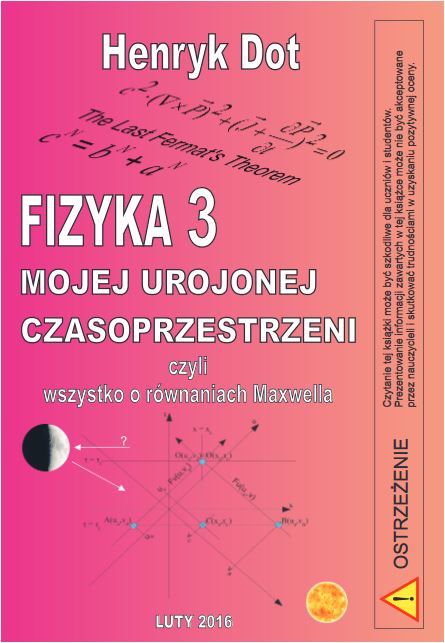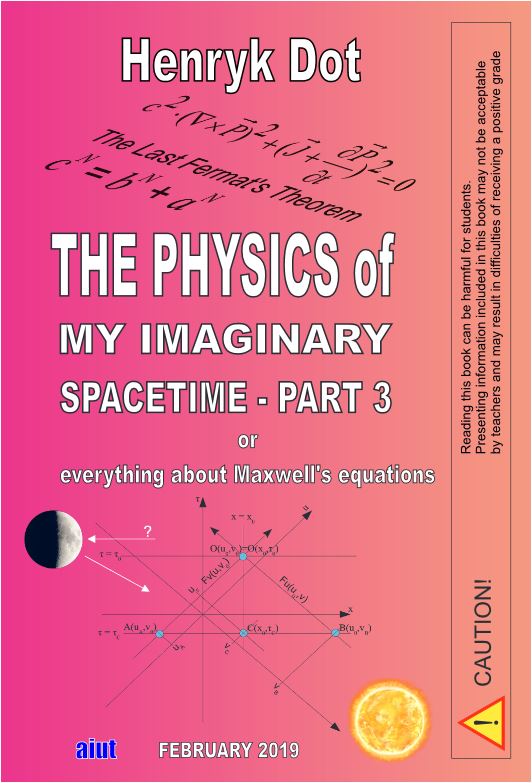is the online companion to a series of books published by AIUT under the common main title
"Physics of My Imaginary Space-Time" by Henryk Dot.
Physics 3 - Maxwell
Note from the Author
Table of Contents
What is this book
Historical facts
New aspects
Fully erroneous
Incorrectly interpreted
Physics 3 - Chapter 1
Equations
Complex vectors form
The Most General form
The General Solution
Physics 3 - Chapter 2
Solutions
Initial conditions
Non-homogeneous equation
Solution for three-directions
The four laws
Physics 3 - Supplement
Fermat's proof
Beal's conjecture
Pythagorean triples
Inertial mass
Gravity constans big G
What does the Moon look at?
Physics 3 - Final notes
Final notes
Physics 4 - New book
Entry
"Subject" should begin with
a digit corresponding to the day
of the week., e.g. Sunday=7
Books published by AIUT
are found in libraries according to the list of compulsory copies.
Second Edition of "Fizyka 3"
ISBN 978-83-926856-1-6

can be bought in Warsaw
in the Academic Bookstore
PW Publishing House
Noakowskiego street 18/20
and in Katowice
in the bookstore "Liber"
Bankowa street 11.
(area of Silesian University)
English edition of "Physics"
ISBN 978-83-926856-2-3

is also in libraries
and the distribution method should be asked wydawca@aiut.com.
|
Chapter 1. Equations 1.1. Symbols and notations used
To denote vector variables, we will use: 1.2. The most general form of Maxwell’s equations The problem of magnetic monopole real existence is not relevant mathematically concerning solutions of the equations. Maxwell’s equations in most general form are presented by following formulas: | |
| , | (1.1) |
| , | (1.2) |
| , | (1.3) |
| , | (1.4) |
| , | (1.5a) |
| . | (1.5b) |
|
The textbooks and publications which include introduction
to Maxwell’s equations should use the above, since they present the essence of described
phenomena in short and concise from. In addition, main equations (1.1-1.4) do not contain
any coefficients, thus make them quite easy to memorize. If there is no need to use values of and we can use relation (1.5) in equation (1.4), therefore obtaining: , which can be further divided by in addition using (1.5) in (1.1), we can derive Maxwell’s equations in a form shown below. However, this form is not easy to memorize: | |
| , | (1.6) |
| , | (1.7) |
| , | (1.8) |
| . | (1.9) |
|
| |
© 2020 Henryk Dot -
